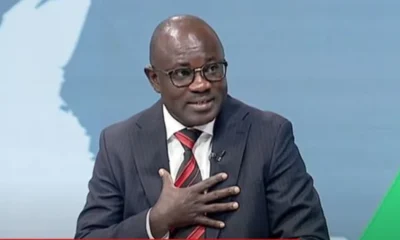Kenya, is it time to go paperless in healthcare service delivery?
For decades, patient information has been captured in hospital/clinic cards or books that are stored in the specific health facility. In the recent decade or so, some facilities have set up some computer-based system of capturing some of the patient information but this in many cases has only zeroed in on basic biodata with few capturing medical history. This information is only important as long as the individual only seeks medical attention in that facility. Unfortunately, most of the facilities that have more than one branch have also not connected their client’s medical records and so it still remains inaccessible even in their own branches.
Access to health or medical related data remains problematic in a health care system that still depends largely on claims data, abstraction of data from paper records, and surveys to determine whether patients are receiving identified elements of care. The dependence on abstraction generally limits performance measurement to evaluation of entities with sufficient administrative infrastructure to develop the necessary data, such as hospitals, health plans, and large group practices, thereby excluding many small ambulatory care settings where a large proportion of care is delivered. Record abstraction is a labor-intensive process that usually occurs retrospectively rather than as an integral part of the clinical process, imposing a burden that prohibits more than intermittent review. While less costly than record abstraction, reliance on claims data may not provide the level of clinical detail required to track processes of care accurately. For example, current claims data in many cases do not indicate whether complications in the course of hospitalization arose from pre-existing comorbidities or adverse consequences of care. Moreover, claims data are available to a large extent for insured populations and are limited to billable services, thus constraining the aspects of care that can be evaluated.
Considering the mobility of people from one region to another and the flexibility of many medical schemes, it is only prudent that a patient should have their medical records available at any facility that they seek medical attention. This does not only spare time normally used to get medical history but more importantly it avails a track record of the health issues an individual has encountered, interventions made and the end result. This is very critical in determining the best interventions at any given time without having to repeat tests and diagnostics which have already been carried out in the course of seeking for treatment. For example, a facility does not need to check someone’s blood group again if it has already been checked and captured in a system that is available in any health facility. Doctors are given an opportunity to interrogate the patient’s health condition and where consultation is required, the involved medics can each have the information available online for the discussions. It also helps in saving the already limited financial resources for the patient, whether it is a cash paying patient or an insured person.
Even as the country focuses on rolling out of the UHC, with NHIF and the government facilities being very key players, Jayesh Saini notes that it is sensible that all health care providers participating in government health care programs be capable of electronically gathering and reporting the subset of patient level data needed to calculate the core sets of performance measures. Jayesh says that even the private sector players are working towards connecting their own facilities to ensure that their patients are well cared for through correct data wherever they access care.
Full implementation will depend in part on the development of a more sophisticated clinical information technology infrastructure throughout the health care system. An adequate information technology infrastructure requires an architecture that links and distributes robust clinical information throughout the network while also meeting the information and technology needs of specific users. In addition, healthcare service providers must meet the growing interest among patients in online access to their health information and the technology applications that can assist them with distance care. Growing evidence supports the conclusion that automated clinical information and decision support systems are critical to addressing the nation’s health care quality gap.

 General News1 week ago
General News1 week ago
 General News4 days ago
General News4 days ago
 General News2 days ago
General News2 days ago
 Politics4 days ago
Politics4 days ago















